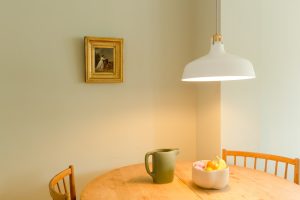The Ugly Truth About Ugly Tables: How to Make Them Beautiful Again!

Introduction
Tables are a common and essential element in web design. They are frequently used to organize data, present information in a structured format, or create a grid-like layout. However, poorly designed tables can be visually unappealing and detract from the overall user experience. In this article, we will explore how to identify and fix ugly tables, making them beautiful and functional.
What Makes a Table Ugly?
Before we can improve the design of a table, we first need to understand what makes a table ugly. Here are some common factors that contribute to an unappealing table design:
1. Cluttered Layout
One of the most common problems with table design is overcrowding. When too much information is crammed into a small space, it can be difficult for users to read and interpret. A cluttered layout can also make it hard to find the information that you are looking for.
2. Poor Contrast
Another issue that can make tables ugly is a lack of contrast. If the colors or fonts used in the table are too similar, it becomes difficult to differentiate between different cells or rows. Additionally, if the contrast between the text and background is too low, the table may become unreadable.
3. Inconsistent Styling
Consistency is key in good design, and tables are no exception. When a table has inconsistent formatting, such as varying font sizes or colors, it can make the table difficult to read and interpret.
How to Fix Ugly Tables
Now that we have identified some common issues with table design, here are some tips on how to fix them:
1. Simplify the Layout
To make a table more visually appealing, start by simplifying the layout. Remove any unnecessary information and try to condense the remaining data into a more readable format. One way to achieve this is by using column and row headers that clearly label the information in each cell.
2. Use High Contrast Colors
Using high-contrast colors is an effective way to make a table more readable. For example, black text on a white background is a classic high-contrast combination that is easy to read. It is also important to ensure that contrast remains high even when viewed on different devices and in different lighting conditions.
3. Optimize Font Usage
Using a consistent font and font size can help to create a more cohesive and readable design. Try to avoid using too many different font sizes or fonts that are difficult to read. Additionally, make sure that the font size is large enough for users to read comfortably.
4. Add Visual Elements
Adding visual elements to the table can help to break up the monotony of rows and columns. For example, using colored bars or icons to highlight key information can draw attention to important data points. Be careful not to overdo it, however, as too many visual elements can make the table cluttered.






